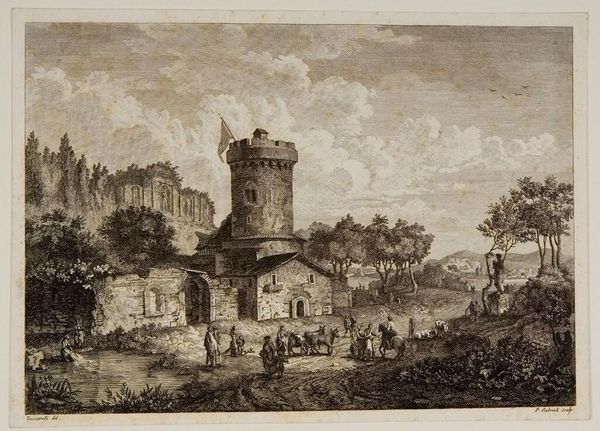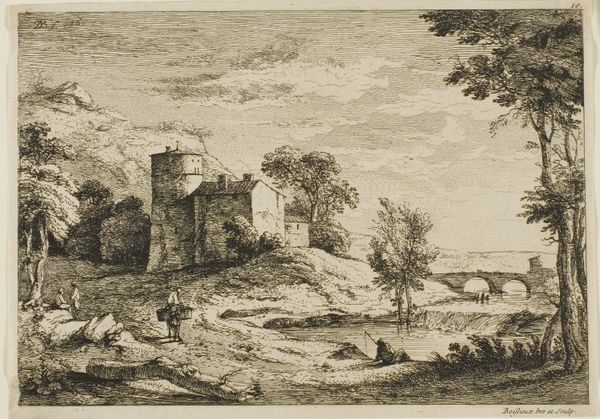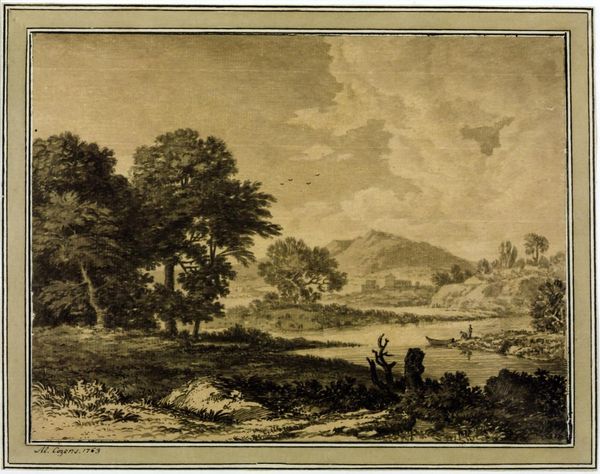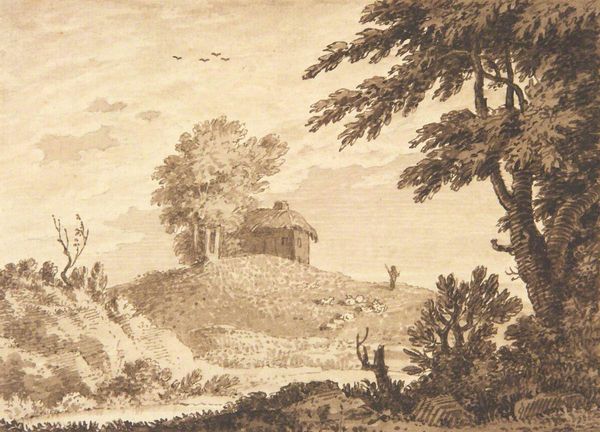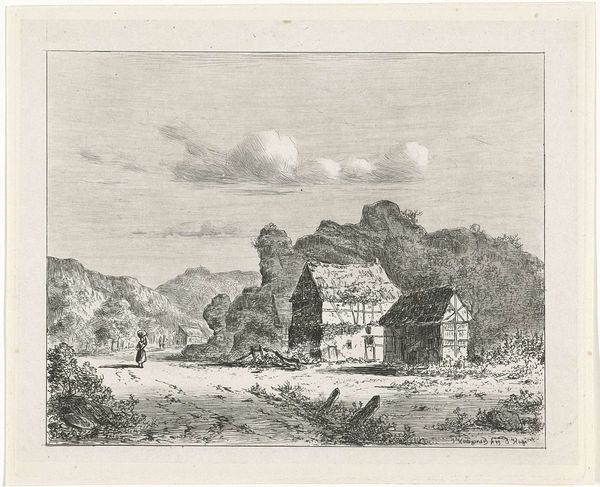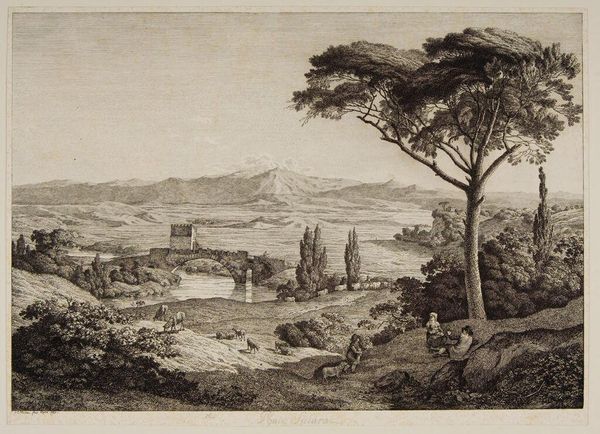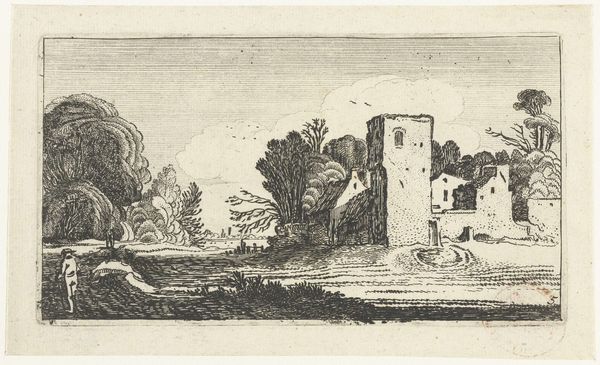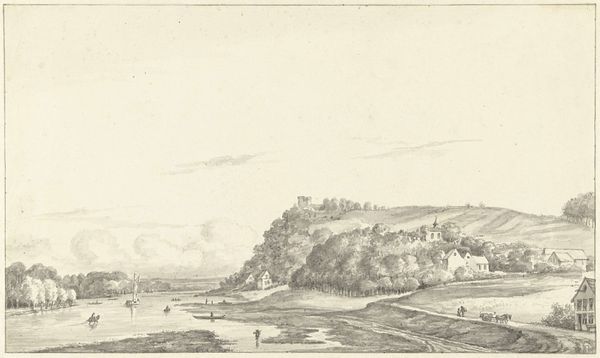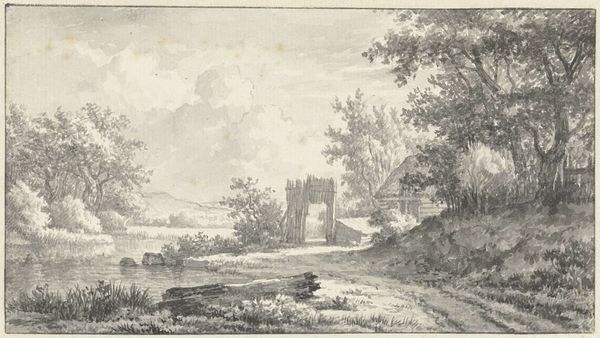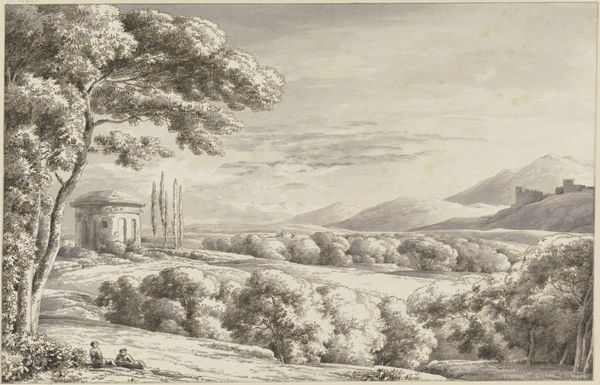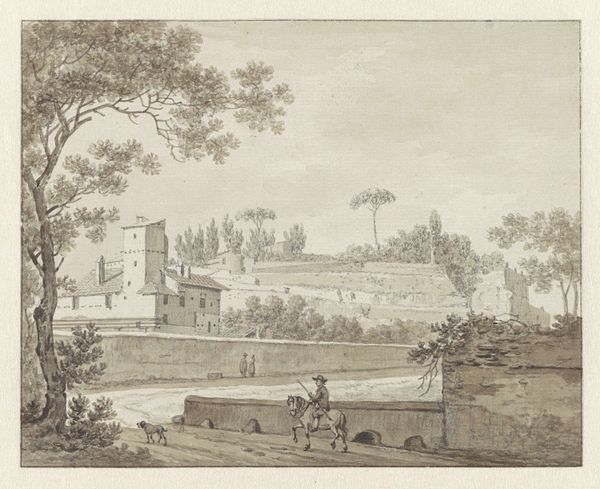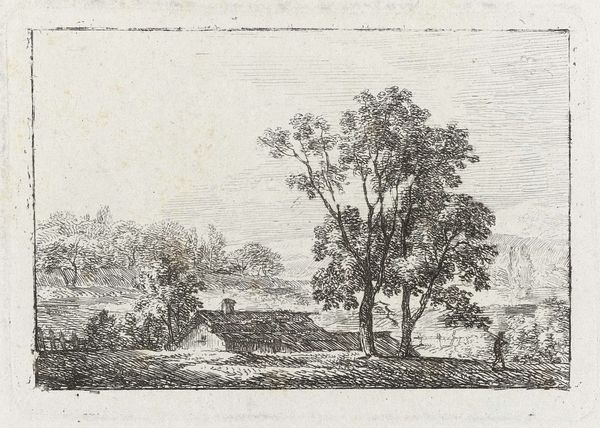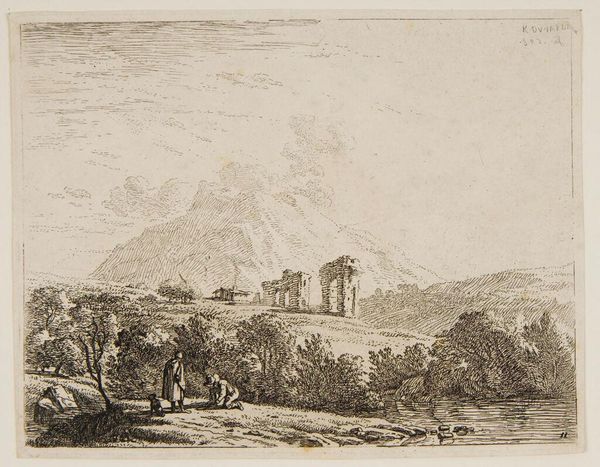
drawing, plein-air, pencil, graphite
#
pencil drawn
#
drawing
#
plein-air
#
pencil sketch
#
landscape
#
form
#
pencil drawing
#
romanticism
#
pencil
#
line
#
graphite
Dimensions: H 14.1 x W 19.7 cm
Copyright: Photo credit: Eton College
Alexander Cozens created 'The Watermill' using pen and grey ink wash on paper. Looking at this 18th century British landscape, what can we say about the image and its relationship to society? For one thing, the watermill was at the heart of British rural life, a hub of the local economy. Cozens highlights the way that human structures are embedded in the landscape. But it is the institution of art we should really consider. Cozens was famously a drawing master, teaching the sons of the wealthy how to sketch picturesque landscapes. With its sublime but generic composition, ‘The Watermill’ epitomises Cozens’s popular method for rapidly producing landscape views, almost like a factory. As historians, we can research the social conditions of British art instruction in this period, using sources such as student lists, fee records, and instructional manuals. What do images like this tell us about the social function of art in 18th century Britain?
Comments
No comments
Be the first to comment and join the conversation on the ultimate creative platform.
